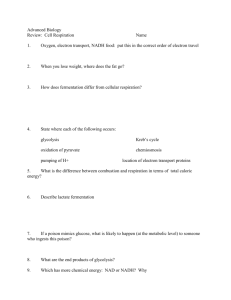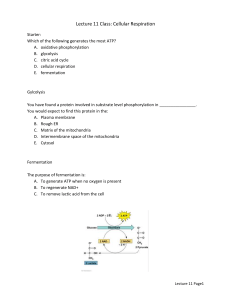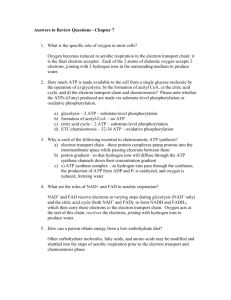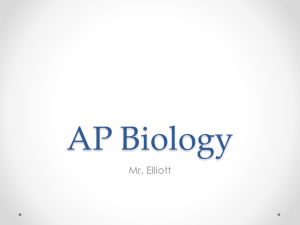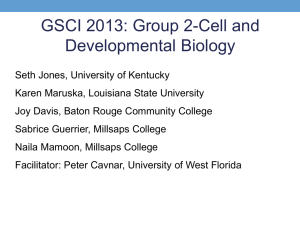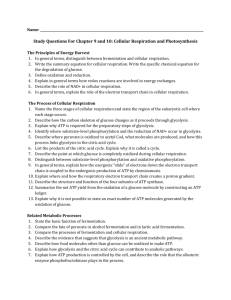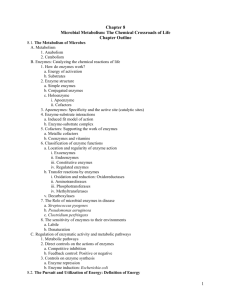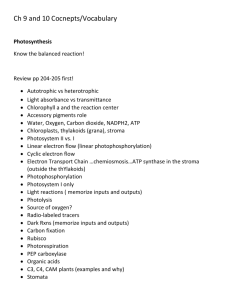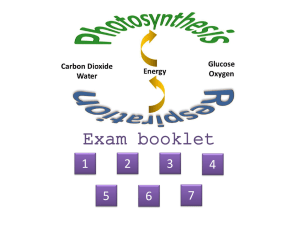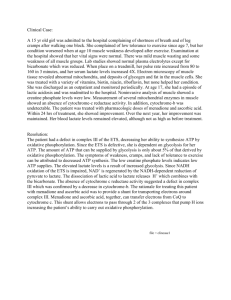Lecture 10 Basics: Cellular Respiration Electron Energy and
advertisement
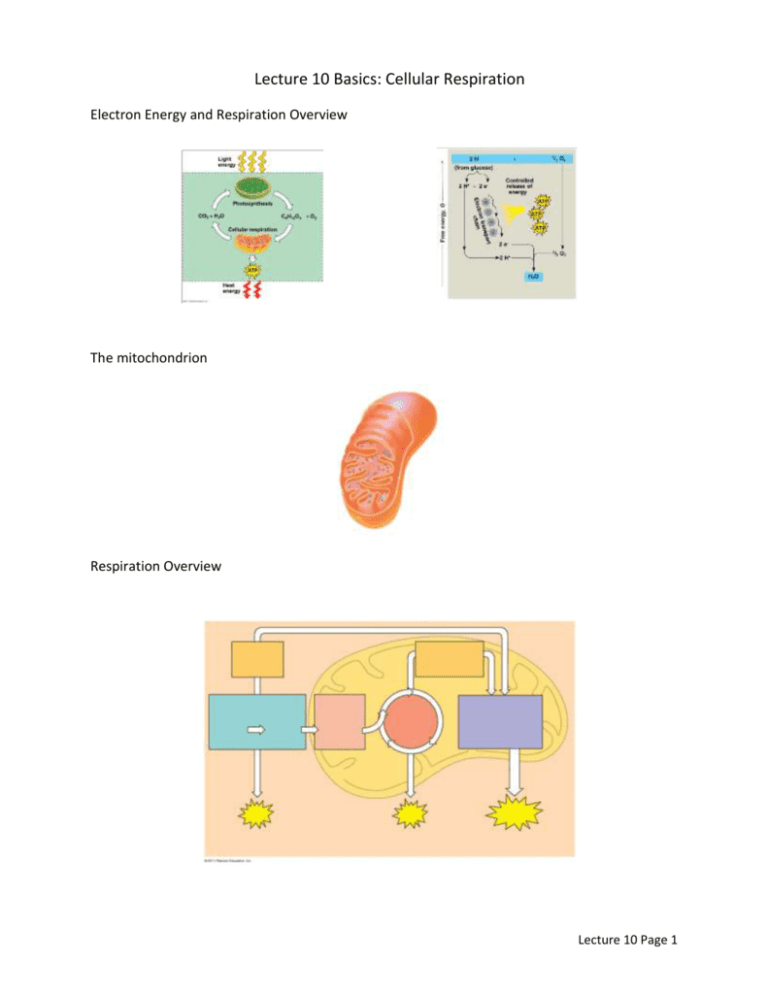
Lecture 10 Basics: Cellular Respiration Electron Energy and Respiration Overview The mitochondrion Respiration Overview Lecture 10 Page 1 Glycolysis NAD+ as an electron shuttle Substrate Level Phosphorylation Fermentation Label figure: Lecture 10 Page 2 Fermentation is not: Fermentation is: Citric acid cycle Other Fuels: Oxidative phosphorylation Location: Proteins called: Lecture 10 Page 3 Steps: 1.NADH 2. FADH2 3. Oxygen 4. ATP synthase Different ways to make ATP: Names: Locations: Relative ATP production Lecture 10 Page 4 Class Notes: In the following image, take a single electron and describe its path from glucose to water. Indicate which steps are glycolysis, citric acid cycle and oxidative phosphorylation. Several poisons and chemicals interfere with oxidative phosphorylation. Some of them interfere with the redox reaction, halting the oxygen consumed by the system. Some of them interfere with the ability to make ATP via chemiosmosis. Imagine an experimental setup that contains: Isotonic saline as a fluid base of the system Intact mitochondria removed from cells Succinate, a molecule that easily donates electrons to the electron transport chain ADP and Pi, as reactants needed to make ATP Air with normal 20% oxygen. The results of this experiment are shown to the right. Lecture 10 Page 5 Below are three experiments, and two figures that represent the results of the experiments. First, decide which experiment(s) matches the figure. Second, describe why the results occurred. 1. Addition of cyanide – an inhibitor of Complex IV, which reduces oxygen 2. Addition of oligomycin – an antibiotic inhibitor of ATP synthase 3. Addition of dinitrophenol, a chemical that is mostly nonpolar and can carry hydrogen ions across the membrane: Sample Questions Which of the following generates the most ATP? A. oxidative phosphorylation B. glycolysis C. citric acid cycle D. cellular respiration E. fermentation Lecture 10 Page 6 You have found a protein involved in substrate level phosphorylation in glycolysis. You would expect to find this protein in the: A. Plasma membrane B. Rough ER C. Matrix of the mitochondria D. Intermembrane space of the mitochondria E. Cytosol The purpose of fermentation is: A. To generate ATP when no oxygen is present B. To regenerate NAD+ C. To remove lactic acid from the cell Chlamydia is an intracellular bacterium that relies on the host cell to provide energy. When a researcher tried to infect host cells that had a defective pyruvate transport protein, the Chlamydia infection didn’t last long. How did the defective pyruvate transport protein prevent the host cells from making enough energy to support the Chlamydia? A. The intermembrane space was acidic compared to the mitochondrial matrix B. NAD+ became oxidized in the cytosol C. The electron transport chain stopped because it lacked a final electron acceptor D. Host cells had to use lactic acid fermentation to make ATP E. Substrate level phosphorylation was inhibited When the electron transport chain in a mitochondrion is active, which of the following occurs? A. Electrons are pumped into the intermembrane space B. NADH is oxidized to NAD+ C. Oxygen is produced in the mitochondrial matrix D. pH of the mitochondrial matrix decreases E. ATP synthase actively pumps protons Lecture 10 Page 7
